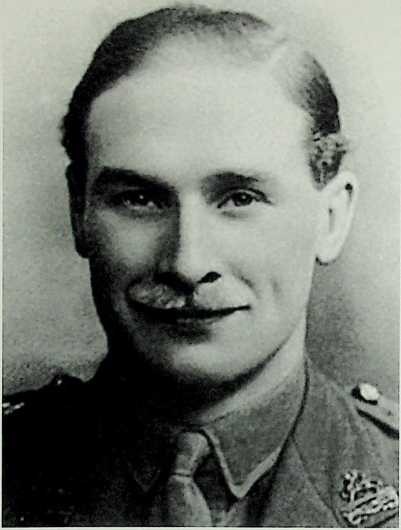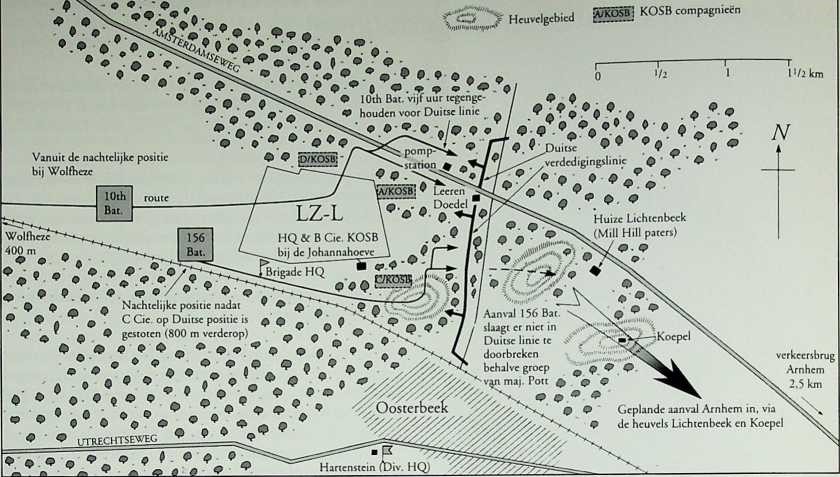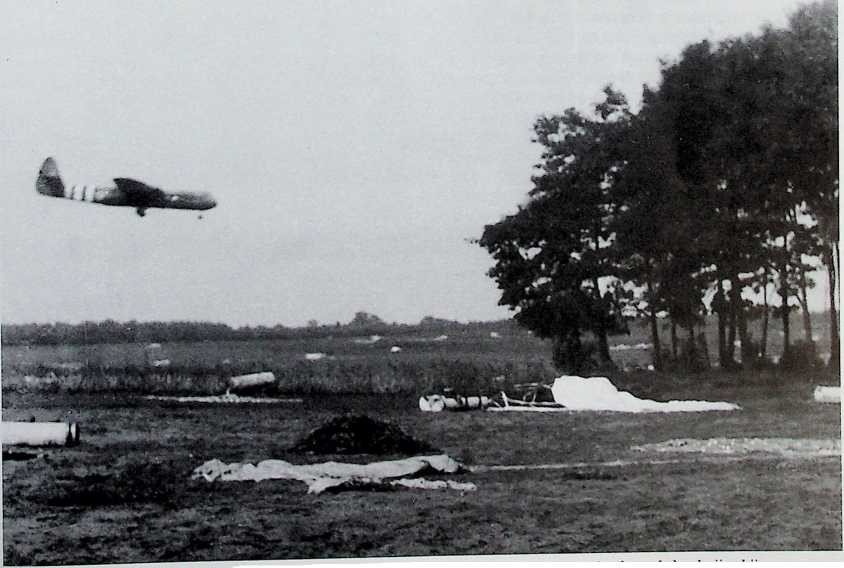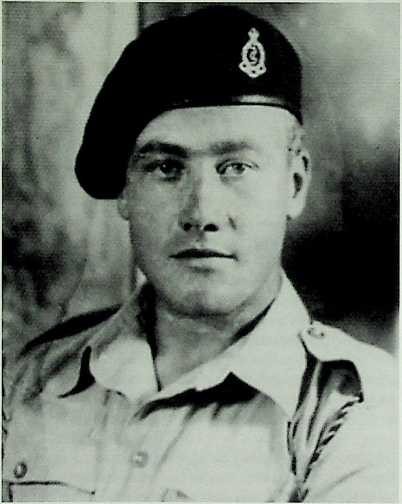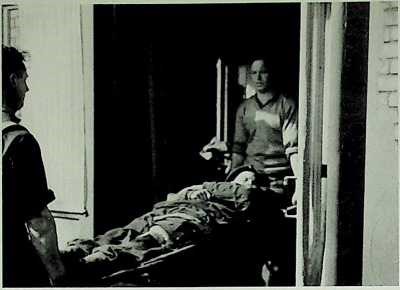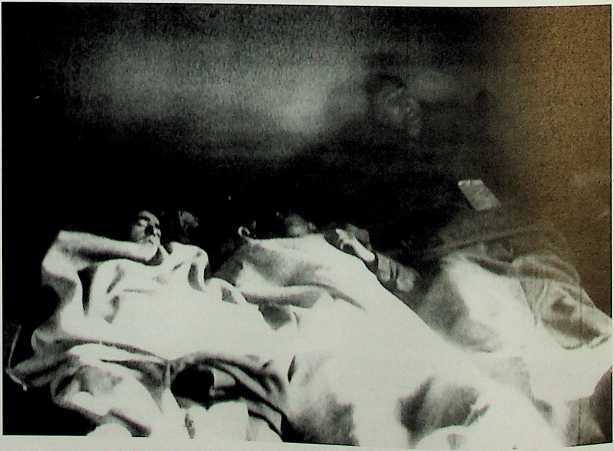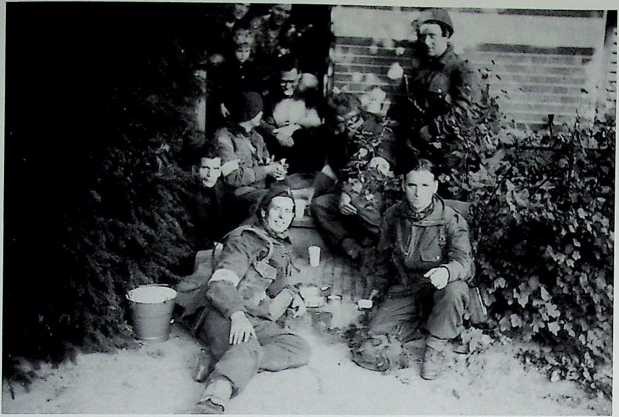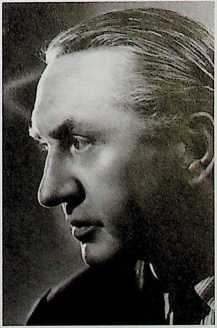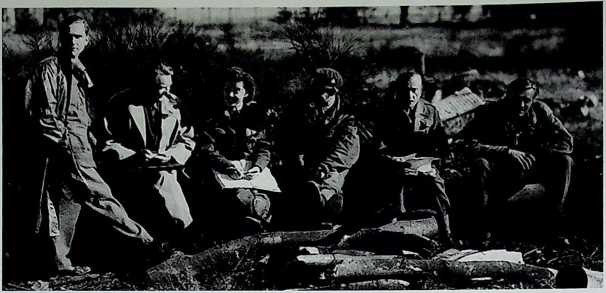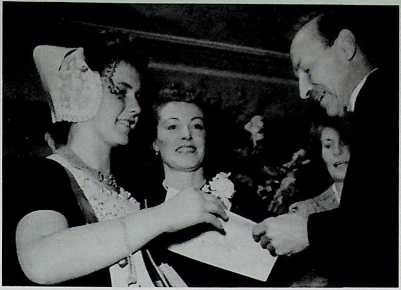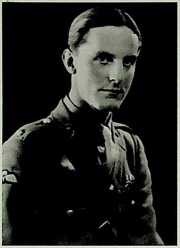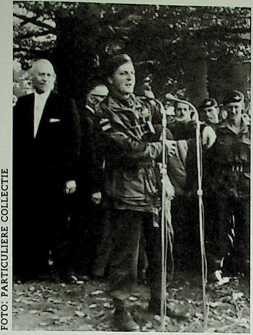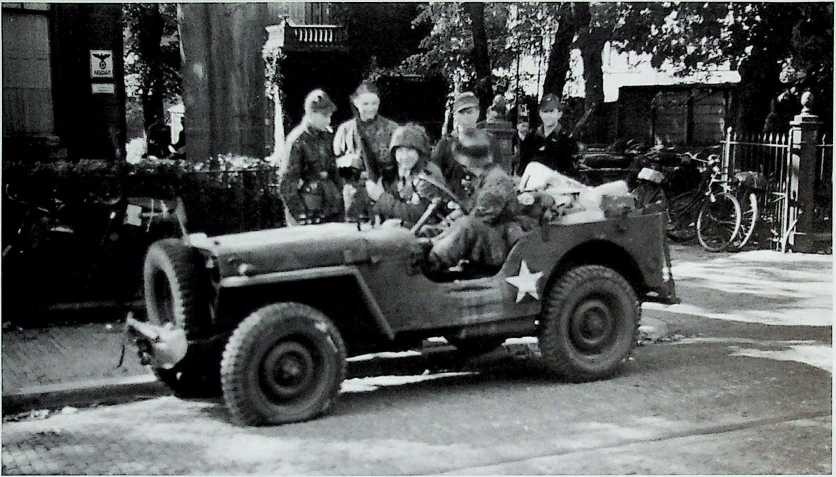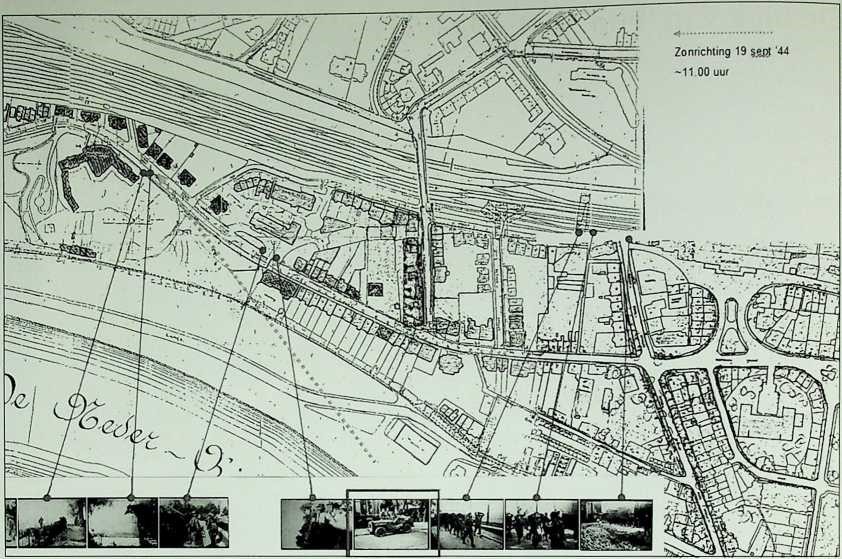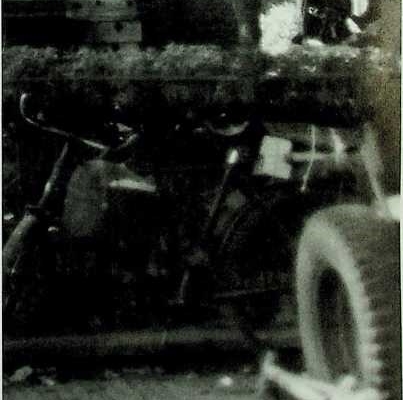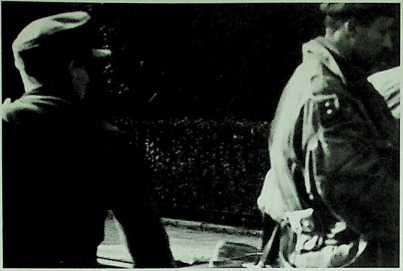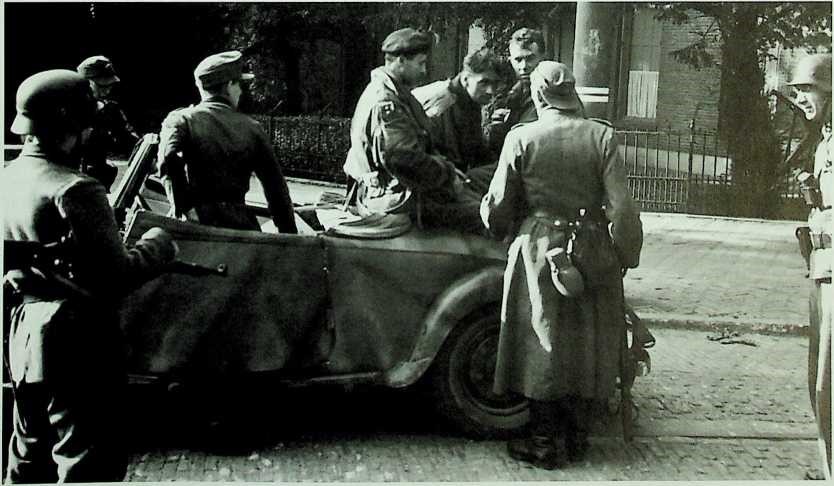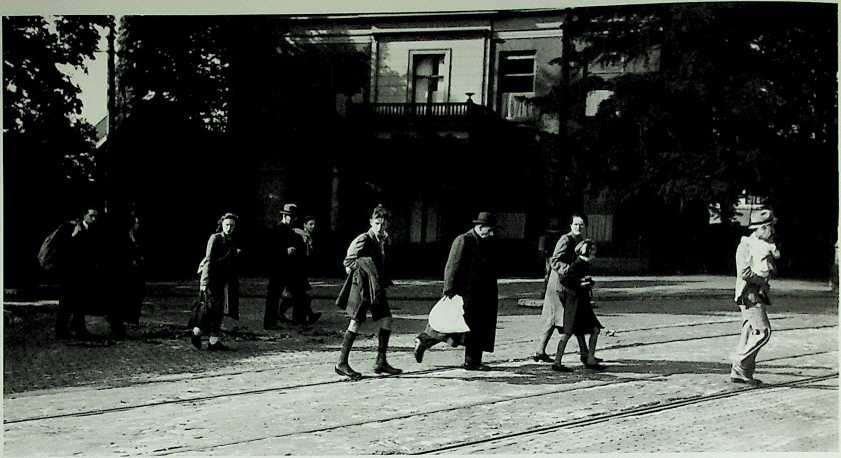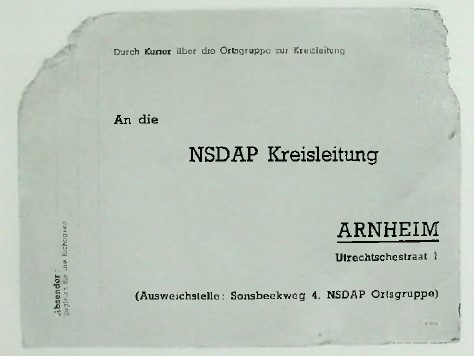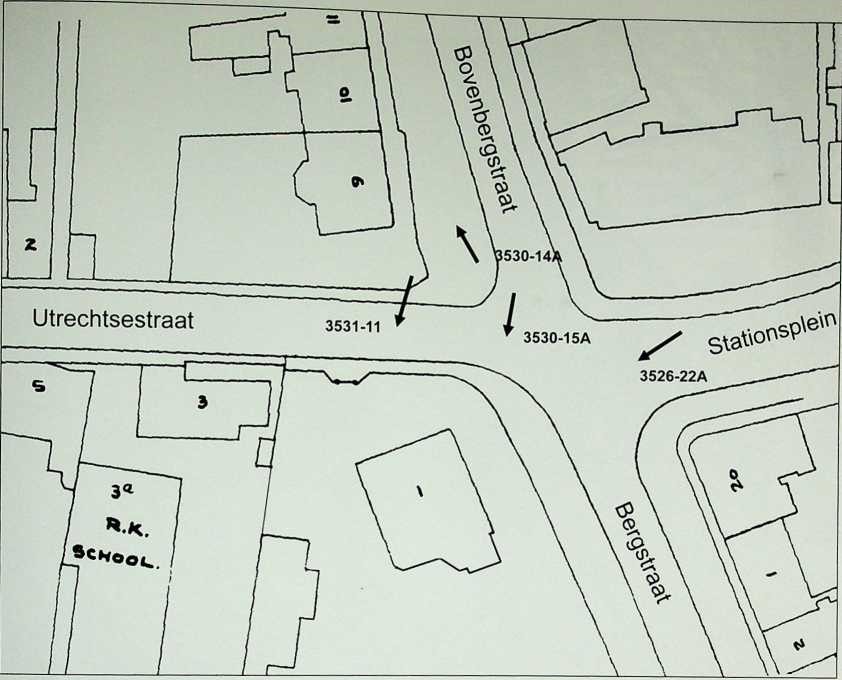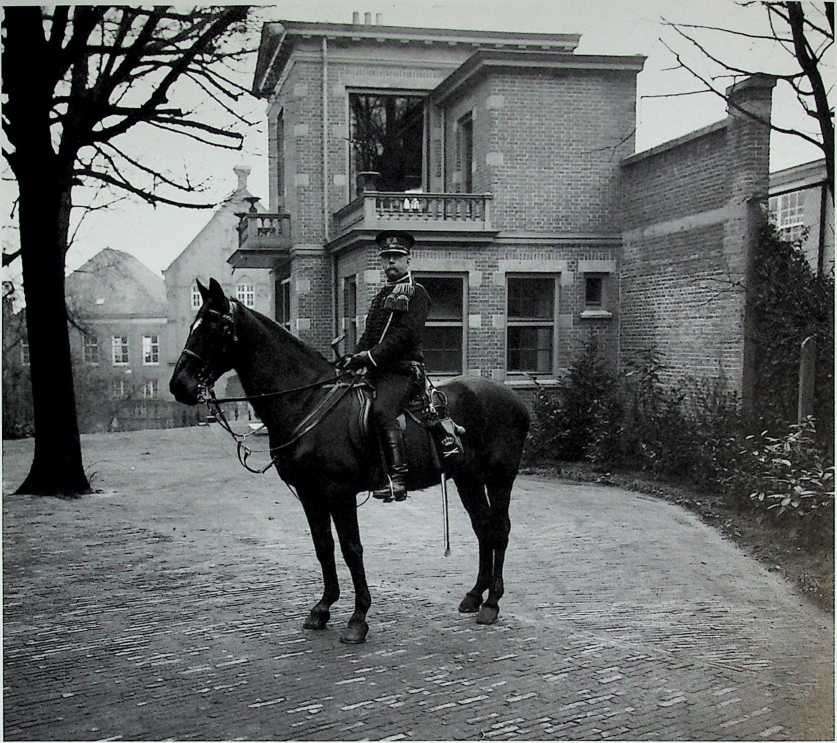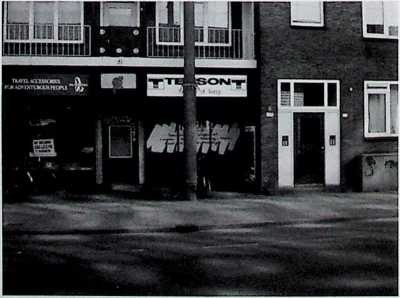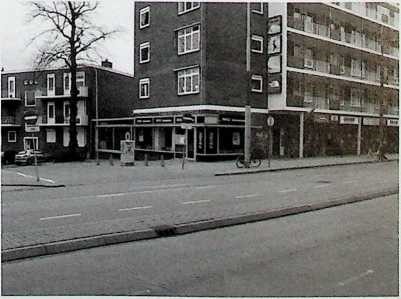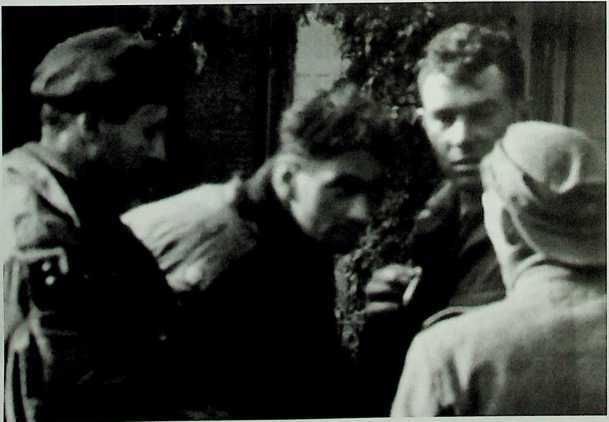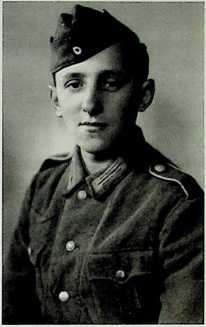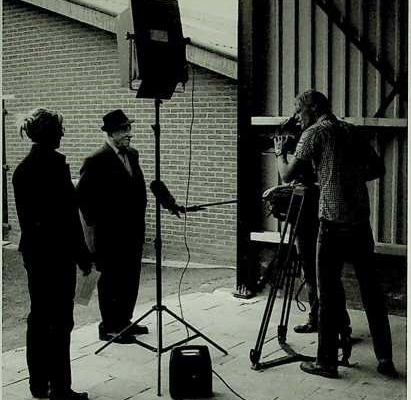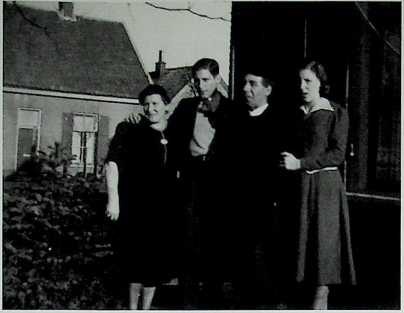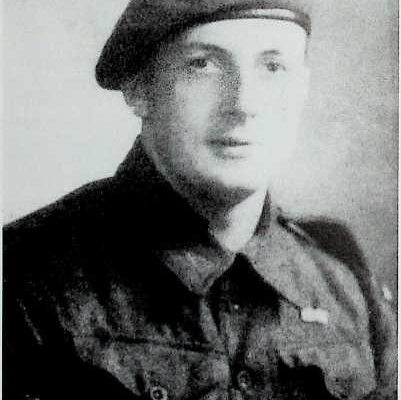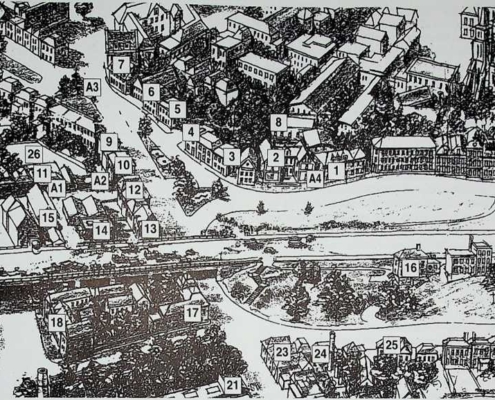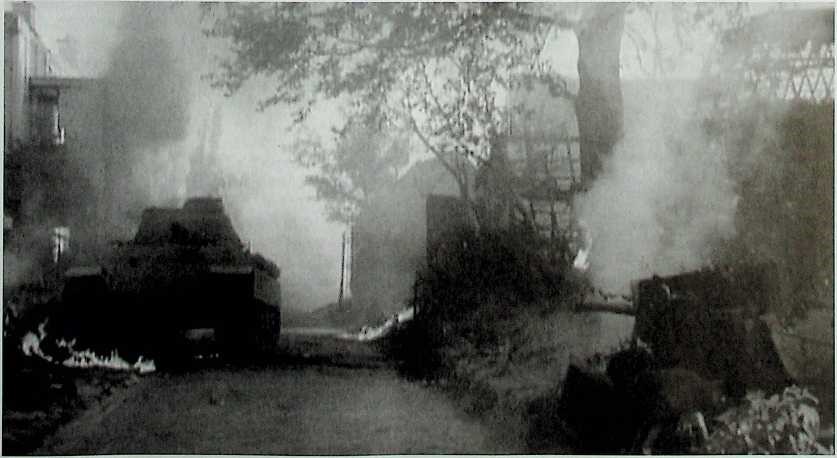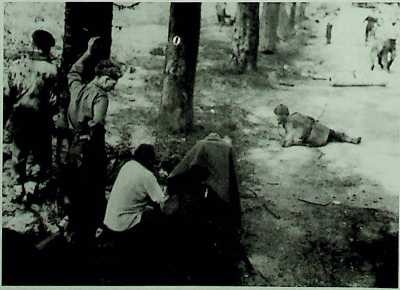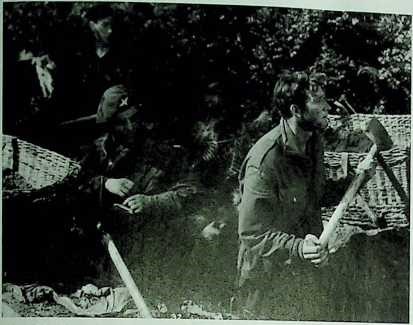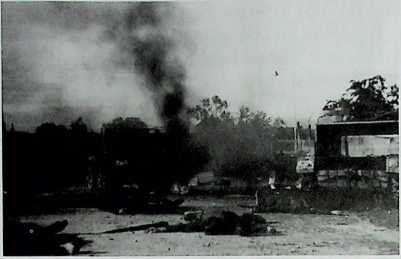MINISTORY No. 109 – Majoor C.N.B. Dawson MC en de 4e Parachutisten Brigade (deel 2)
Niall Cherry
Bijlage bij Nieuwsbrief No. 123 van de Vereniging Vrienden van het Airborne Museum Oosterbeek, augustus 2011
Er zouden vragen gesteld kunnen worden over Hackett’s acties gedurende de late avond en nacht van dinsdag 18 op woensdag 19 september 1944. Toegegeven, het was een moeilijke situatie voor hem. Delen van het 10e Bataljon bevonden zich die dinsdagavond noordelijk van de spoorlijn in Wolfheze. Zij begonnen met het bezetten van het dorp, waar op het moment dat zij aankwamen nauwelijks Duitsers waren. Er waren echter maar honderd man van het 10e Bataljon, inclusief de commandant, Lieutenant Colonel Smyth, maar er zaten ook mannen bij van het 156e Bataljon en een paar zweefvliegtuigpiloten. Major Peter Warr, commandant van B Compagnie, 10e Bataljon, reed in een jeep door het dorp om de burgers te waarschuwen dekking te zoeken, omdat er een Duitse aanval werd verwacht. Maar de Duitsers vielen Wolfheze die avond niet aan. Alleen Captain Queripel’s kleine eenheid werd noordelijk van de spoorlijn aangevallen, maar verder waren er die avond geen serieuze gevechten. Maar als we de balans opmaken, zien we dat de 4e Brigade (met 7 KOSB), die twaalf uur eerder nog bijna op volle sterkte was, nu bestond uit minder dan de helft van die sterkte en tot stilstand was gekomen in Wolfheze en in de bossen oostelijk van dit dorp.
Ongeveer 54 man waren gedood gedurende de gevechten op die dag, inclusief de mannen van 7 KOSB. Dit waren de zwaarste verliezen die de Brigade op één dag leed gedurende de gehele Slag om Arnhem. Meer dan 50% van de gesneuvelden – 4 officieren en 25 Other Ranks – waren van het 10e Bataljon. Daardoor was een groot deel van de 4e Brigade buiten gevecht gesteld. In theorie en in de praktijk was de trotse eenheid waarover Hackett het bevel voerde, 48 uur na de landing uit elkaar gevallen. Men heeft zich vaak afgevraagd waarom Hackett die nacht niet probeerde naar Oosterbeek te trekken, maar wachtte tot de volgende dag. Ik twijfel er niet aan dat de overgebleven troepen onder zijn bevel hier zonder al te veel problemen in zouden zijn geslaagd. Hackett’s verslag vermeldt dat deze optie inderdaad werd overwogen:’Via de radio besprak ik met het Divisie Hoofdkwartier de mogelijkheid om ’s nachts in de richting Oosterbeek te trekken naar het gebied waar de rest van de divisie zat. Ik had de voorkeur om te vertrekken om 23.00 uur, omdat het 10e Bataljon dan ook gereed kon zijn. Maar op het Divisie Hoofdkwartier stelde men voor om eerst in het donker verkenningspatrouilles uit te sturen en dan vervolgens bij het eerste licht de rest te laten volgen. Ik zag niets in verkenningspatrouilles en uiteindelijk kwamen we overeen dat bij het eerste licht de hele Brigade zou gaan. Mijn belangrijkste zorg was dat ik niet precies wist waar de rest van de Divisie zich bevond en wat deze verder van plan was.
En zo vertrokken in de ochtend van woensdag 20 septem-ber om 06.15 uur de restanten van de 4e Parachutisten Brigade vanaf de lokatie met kaartcoordinaten 681798 in de richting van Oosterbeek, met het 156e Bataljon voorop. Na ongeveer 400 meter sloegen zij op de lokatie met kaartcoordinaten 682786 de Breedelaan in en volgden die in zuidoostelijke richting.
A-compagnie van het 156e Bataljon ontmoette hier sterke tegenstand door mitrailleurvuur vanuit westelijke richting. C-compagnie deed een aanval naar rechts, om de splitsing Utrechtseweg-Breedelaan veilig te stellen, maar stuitte op nog sterkere Duitse eenheden, waaronder gemotoriseerd geschut, en werd ongeveer 200 meter van hun doel tegengehouden.

Een van de foto’s die Captain Jasper Booty met zijn privé camera maakte tijdens de tocht van de 4e Brigade door de bossen ten noordwesten van Oosterbeek. Links Brigadier Hackett met in zijn hand een microfoon van een zendontvan- ger. Voor hem op de grond een kaart van het operatiegebied. Op de achtergrond een jeep waartegen enkele mannen zitten. (Foto: Jasper Booty)
C-compagnie van het 1e Bataljon, van het Border Regiment had deze wegsplitsing tot voor kort in handen gehad, maar was de vorige nacht teruggetrokken naar het kruispunt bij de Koude Herberg, waardoor de Duitsers hadden kunnen oprukken. Pogingen om een aantal huizen langs de Wolfhezerweg te veroveren mislukten en de Duitsers lanceerden twee tegenaanvallen, die weliswaar konden worden afgeslagen, maar ten koste van veel verliezen. Om ongeveer 10.00 uur had het 156e Bataljon posities ingenomen bij de wegsplitsing, maar hun aantal was verminderd tot 120 man. Er zat daar ook een aantal mannen van het 10e Bataljon. De Duitsers rukten op vanuit het noordwesten en vanuit het noorden. Deze troepen waren van het SS Bataljon Eberwein en zij hadden eerst Wolfheze ingenomen.
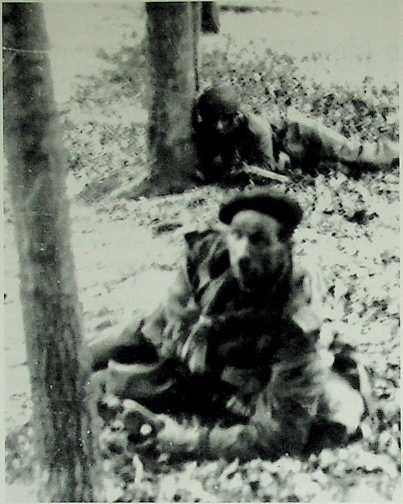
Nog een foto uit de serie van Jasper Booty die werd genomen in de bossen van de Bilderberg. Op de voorgrond ligt Brigade Major Bruce Dawson en achter hem een onbekende militair. Beiden zoeken dekking tegen de Duitse beschietingen. Omdat Dawson eerder gewond was geraakt, zit zijn rechterarm in een draagverband. Kort nadat deze foto was genomen werd Dawson dodelijk getroffen. Hij werd ter plaatse begraven in een veldgraf. (Foto: Jasper Booty)
De Kampfgruppe Krafft volgde de Brigade vanuit het noorden en de mannen van de onderofficiersschool van de SS kolonel Lippert trokken vanuit Heelsum op naar Oosterbeek. De 4e Parachutisten Brigade dreigde opnieuw omsingeld te worden. Een paar Britse verkenningspatrouilles ontdekten dat er weinig Duitsers zaten in oostelijke richting en Hackett besloot daarom die kant uit te gaan. Hij beval het 10e Bataljon om eerst te vertrekken, onder leiding van Major Peter Warr, omdat Luitenant Colonel Smyth eerder die dag gewond was geraakt. Deze groep ging op weg, waarna het kontakt met de rest van de Brigade verloren ging. Na een fors man tegen man gevecht slaagde ze er in via de Valkenburglaan om 13.30 uur de Divisie Perimeter te bereiken. Er waren toen nog 60 man van het bataljon over.
Intussen zat de rest van de 4e Brigade in ernstige moei-lijkheden. De mannen konden het 10e Bataljon niet volgen en brachten de rest van de ochtend door in de bossen, waarbij de groep uiteindelijk terecht kwam op een plaats met de kaar coördinaten 685786.
Zij werden aangevallen door tanks, infanterie, vlam-menwerpers en mortieren. Terwijl ze voortdurend van richting veranderden, leden ze steeds meer verliezen en steeds meer mannen verloren het kontakt met de hoofdgroep. Alle anti-tank kanonnen gingen verloren. De munitie was bijna op, vooral die voor de PIAT. De verliezen waren groot. Het Brigade Hoofdkwartier verloor de Brigade Major Bruce Dawson en de inlichtingen officier, Captain George Blundell. Beiden sneuvelden. Het 156e Batalion verloor zowel haar commandant Luitenant Colonel Sir Richard des Voeux, als haar plaatsvervangend commandant Major Emest Ritson, die werden gedood. De Adjudant Captain Micky Gibbs werd gevangen genomen. De overgebleven mannen zaten op een kleine open plek. Major Geoffrey Powell, commandant van de C-compagnie van 156e Bataljon schreef: ‘Op een open plek in het bos zag ik drie jeeps van het Brigade Hoofdkwartier. Twee stonden dicht bij elkaar en op de aanhanger van een van de jeeps lag een man op een brancard. Je kon tussen de bomen Duitsers zien rennen. Plotseling verscheen de loop van een stuk Duits gemotoriseerd geschut. Het vuurde en raakte een van de jeeps, die in brand vloog. Een chauffeur rende weg en schreeuwde dat de jeep vol zat met munitie. We keken allemaal vol afgrijzen toe en wachtten op de explosie. Toen rende er plotseling van tussen de bomen een kleine magere man naar de brandende voertuigen. Het was de Brigadier! Hij sprong in de jeep waarachter de trailer zat met de gewonde man, vlak naast het brandende voertuig. Terwijl hij zijn gezicht trachtte te beschermen tegen de vlammen reed hij de jeep naar een veiliger plaats.
De man op de brancard was Luitenant Colonel Derek Heathcote-Amory, die alleen aan Market Garden had kunnen deelnemen, nadat hij twee dagen verlof had genomen van zijn taak als GHQ Liaison Regiment. Hij had zijn vriend Hackett overgehaald hem mee te nemen als ‘Liaison Officer’.
Hackett nam nu de beslissing om in zuidelijke richting te trekken, waar hij hoopte de rest van de divisie aan te treffen. Hij riep Major Powell van het 156e Bataljon bij zich. Powell zei hier later over: ‘Hij lag niet in dekking, maar stond rechtop achter een klein bosje, schijnbaar ongevoelig voor het gevaar en ik moest naast hem gaan staan. Hij wees naar een groepje hoge bomen die ongeveer 150 meter van ons vandaan stonden, rond een laagte in terrein die op de route lag die wij wilden volgen.
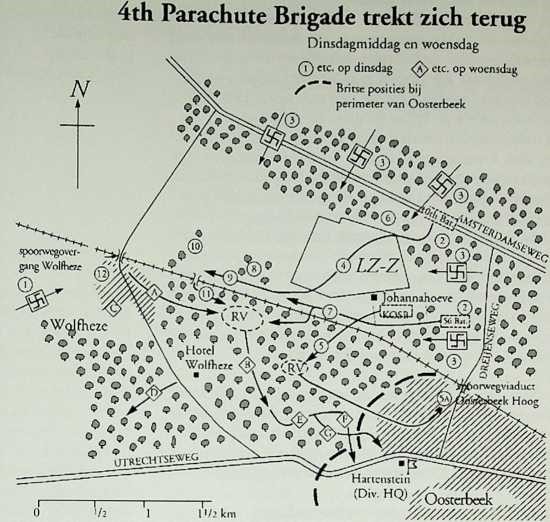
Kaart waarop de routes van de verschillende eenheden van de 4e Brigade tijdens de terugtocht naar Oosterbeek zijn aangegeven. De kaart komt uit het in 1994 verschenen boek ‘ARNHEM 1944’ van Martin Middlebrook.
Er zat een groot aantal Duitsers in die laagte. Hackett zei dat ik de enige was met een georganiseerd groepje mannen en dat ik met hen de vijand uit de laagte moest verdrijven. Daarna zouden de anderen volgen’ Nogmaals Major Geoffrey Powell: ‘Ik verzamelde mijn mannen en gaf hen duidelijke orders. We zouden op de vijand afstormen en ik voegde er aan toe dat het beter was om te sneuvelen bij een aanval op die klootzakken, dan in een greppel te blijven liggen. Ik leidde de mannen uit de dekking van de bomen. Niemand aarzelde. De Moffen begonnen te rennen. Het beeld van een stel wilde, schreeuwende parachutisten was te veel voor hen. We verjoegen de Duitsers uit de laagte; alleen hun gewonden bleven achter. Snel organiseerde ik de verdediging en spoedig volgde de Brigadier met de andere mannen.’
Het waren niet meer dan 150 man, die de randen van de laagte verdedigden. De enige munitie die er was, droegen ze bij zich. Sommige mannen gebruikten Duitse wapens. Er wordt gezegd dat er ongeveer twintig Duitsers gevangen waren genomen, maar of die de laagte ook hadden kunnen bereiken is onduidelijk. Gedurende de middag voerden de Duitsers voortdurend aanvallen uit, maar deze werden afgeslagen door het vuren met handwapens of door tegenaanvallen. Het verhaal gaat dat sommige van deze tegenaanvallen werden geleid door Hackett zelf. Zijn chief clerk, Staff Sergeant Pearson, speelde ook een belangrijke rol bij de verdediging.
Toen de munitie dreigde op te raken, werden de Duitsers brutaler en veroorzaakten veel verliezen bij de Britse verdedigers. Het leek er op dat de enige keuzes waren te sneuvelen of zich over te geven. Maar Brigadier Hackett had een moedig plan. Om ongeveer 17.00 uur riep hij de overgebleven officieren en onderofficieren bijeen voor overleg. Hier volgt het verslag van Captain Jasper Booty: ’We hadden ongeveer vier of vijf uur in deze laagte gezeten onder continu vuur van scherpschutters, toen de Brigadier ons bijeen riep in een kleine kring. Het vuren was wat verminderd en het was even rustig toen hij zijn orders gaf. Deze waren eenvoudig.
Over 15 minuten zouden alle mannen die nog konden staan zich hier verzamelen en bij Hacketts bevel allemaal tegelijk dwars door de Duitse posities heen rennen in de richting van de dichtstbijzijnde Britse linies, die ongeveer 250 meter verder naar het oosten lagen. Bij de uitbraak zouden rookgranaten worden gebruikt en een aantal mannen moest tot het laatste moment vanaf de rand van de laagte blijven vuren. De gewonden moesten achterblijven en de Brigadier ging snel rond om afscheid van hen te nemen.
Met een harde schreeuw van iedereen leidde de Brigadier de wilde stormaanval. De snelheid van deze uitbraak verraste de Duitsers volledig en we leden bijna geen verliezen. We gingen minder hard lopen na ongeveer honderd meter, toen we een boomgaard bereikten, van waaruit we de Britse posities konden zien’.
De overlevenden renden door de keurig gegraven posities van A-compagnie van de 1e Border Bataljon, die het tot dat moment redelijk rustig hadden gehad. Zij schrokken zich dood toen ze die groep vuile, met bloed besmeurde mannen zagen. Major Powell kreeg het dringende verzoek van de Captain van de Borders: ‘zorg dat dit zooitje zo snel mogelijk uit mijn compagnies- gebied verdwijnt!’ Er waren toen nog maar ongeveer 90 man over en zij volgden Hackett naar het Divisie Hoofdkwartier, waar wat eten en munitie werd uitgedeeld. Daarna kregen ze posities toegewezen in de Perimeter, maar dat is een ander verhaal’
Hackett vergat de dappere acties van zijn Brigade Major Dawson niet. Zijn naam was de eerste die hij noemde in een brief aan Generaal Urquhart, die hij schreef vanuit het St. Elisabeth’s Gasthuis in Arnhem, nadat hij op 24 september in Oosterbeek gewond was geraakt:
Onderwerp: Aanbeveling voor onderscheidingen.
General Officer Commanding Ist Airborne Div.
‘Ik wil er zeker van zijn dat mijn afwezigheid en de onduidelijke situatie binnen de eenheden van mijn Brigade geen invloed zullen hebben op de kans dat mensen hun welverdiende onderscheiding krijgen. Ik heb daarom aanbevelingen geschreven voor officieren en lagere rangen, waarvan ik hun daden persoonlijk heb gezien. Natuurlijk zijn deze aanbevelingen verre van uitgebreid en ontbreken vooral gegevens over de lagere rangen.
Ik voeg hierbij een aantal notities over hen en een lijst met officieren en lagere rangen.
Major Eyles, mijn DAAQMG, is de officier de het beste de gegevens kan verzamelen en de zaken verder kan regelen.’
Hackett had de volgende notitie toegevoegd: ‘Brigade Hoofdkwartier, Major Dawson. Hij is vermoedelijk dood, maar zijn prestaties waren voortreffelijk, volgens mij niet ver van het niveau van een VC (Victoria Cross). Ik zet dit er in omdat hij het misschien heeft overleefd. Indien dat niet het geval is, zou u kunnen denken aan de hoogste onderscheiding’.
De brief gaat verder met andere voordrachten voor onderscheidingen, die misschien in een van de volgende Nieuwsbrieven kunnen worden behandeld.
Bruce Dawson kreeg in september 1945 posthuum een ‘Mentioned in Dispatches’ voor zijn inzet bij Arnhem.
Het is vreemd dat Hackett in oktober 1944 dacht dat Dawson mogelijk nog in leven was. Hackett bevond zich waarschijnlijk vlakbij hem in het bos, toen Dawson op 20 september in zijn hoofd werd geschoten.
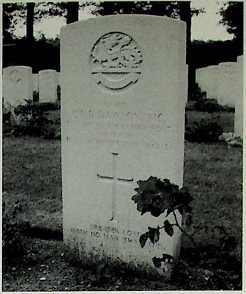
Het graf van Brigade Major Bruce Dawson op de Airborne Begraafplaats in Oosterbeek.(foto Robert Voskuil)
Jaren na de oorlog schreef Hackett in een brief naar de familie over de periode dat Dawson bij de 4e Brigade kwam: ‘Ik merkte direct dat de nieuwe Brigade Major precies de man was die we nodig hadden en ik had alle vertrouwen in hem en ik hoop dat ik zijn vertrouwen had. Zijn rustige en ondeugende gevoel van humor sprak mij erg aan. Zijn kwaliteit om het beste uit mensen te halen was zowel binnen het Brigade Hoofdkwartier als daarbuiten een bron van veel kracht.’
Ook schreef Hackett: ‘Hij was een zeer dappere man. Hij had al een Military Cross, en als hij was blijven leven, dan had hij, gezien zijn gedrag tot het moment dat hij werd gedood, er zeker nog een gekregen, of misschien nog wel een hogere onderscheiding. Ik zeg dit als de persoon die verantwoordelijk zou zijn geweest voor het indienen van de aanbeveling en ik weet waar ik over praat. Ik kan mij nog levendig de gevechten in de bossen herinneren, toen we ons in een zeer moeilijke situatie bevonden. Ik kan mij herinneren dat hij alles aan kon. Ik herinner mij dat hij een Duits geweer greep, dat was weggegooid door een soldaat die het op een lopen had gezet bij de woeste aanval van de mannen van het Brigade Hoofdkwartier. Iedereen zat in dezelfde situatie, van de stafofficieren tot de soldaten. We waren allemaal gevechtssoldaten, die er tegenaan moesten. Bruce schoot een van de Duitse soldaten neer met zijn wapen. ‘Hallo’ zei ik, ‘wat is dit?’ Als de Brigade Major hen kan uitschakelen, waarom dan niet de Brigadier?’ Bruce gaf mij een ander Duits geweer en daarmee begon ik te schieten. Kort daarop raakte hij gewond, maar hij wilde niet achterblijven. Toen werd hij van dichtbij gedood door een geweerschot. De strijd moest doorgaan, maar een grootse en fantastische man was van ons afgenomen en ’s avonds treurde ik over een verloren vriend.’
Bruce Dawson werd eerst begraven in een veldgraf westelijk van de Valkenburglaan in Oosterbeek en nu ligt hij op de Airborne Begraafplaats in Oosterbeek, in graf 6C11.
Met dank aan John Howes en Bob Hilton voor hun hulp bij het schrijven van deze Ministory
Vertaling: Robert Voskuil

